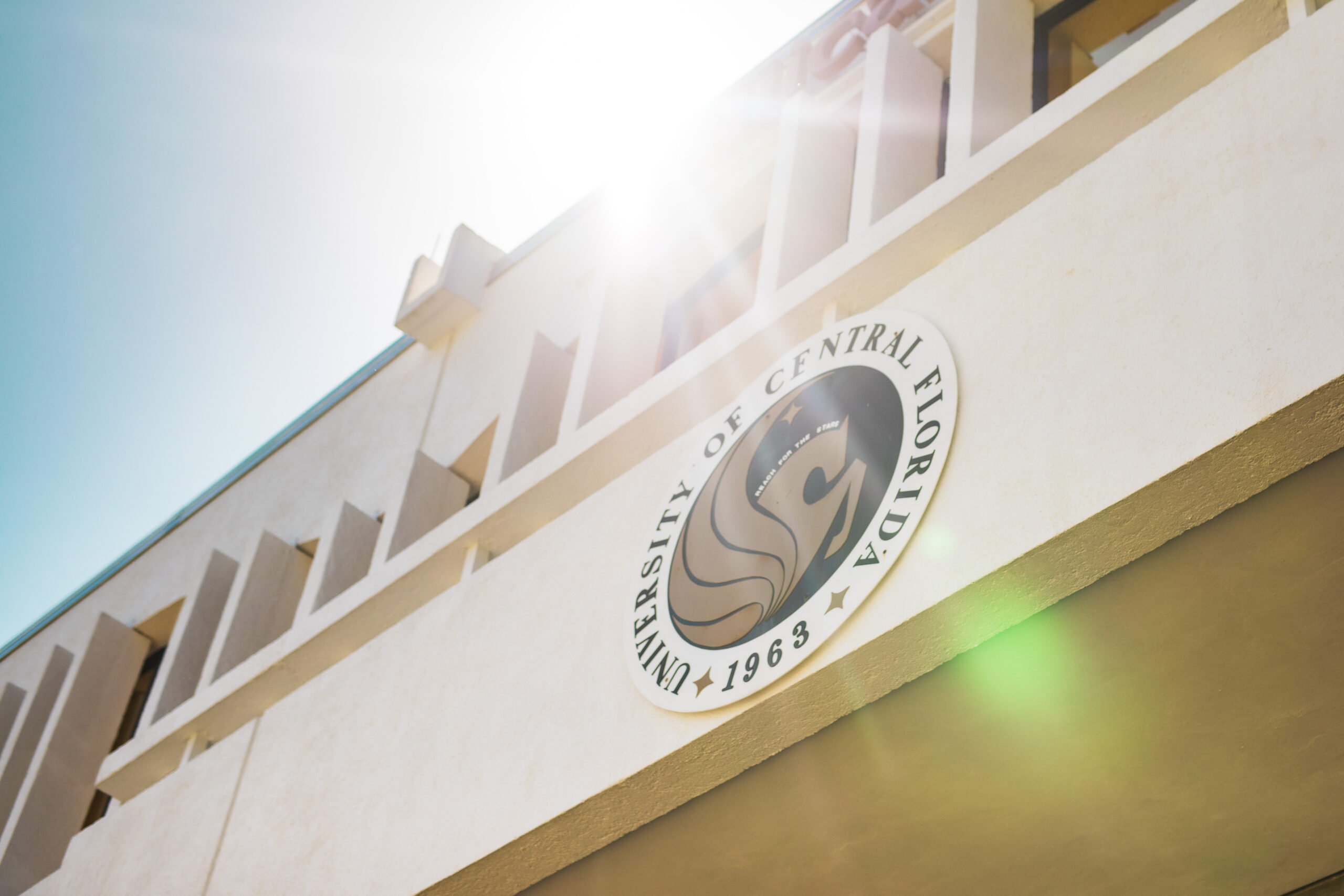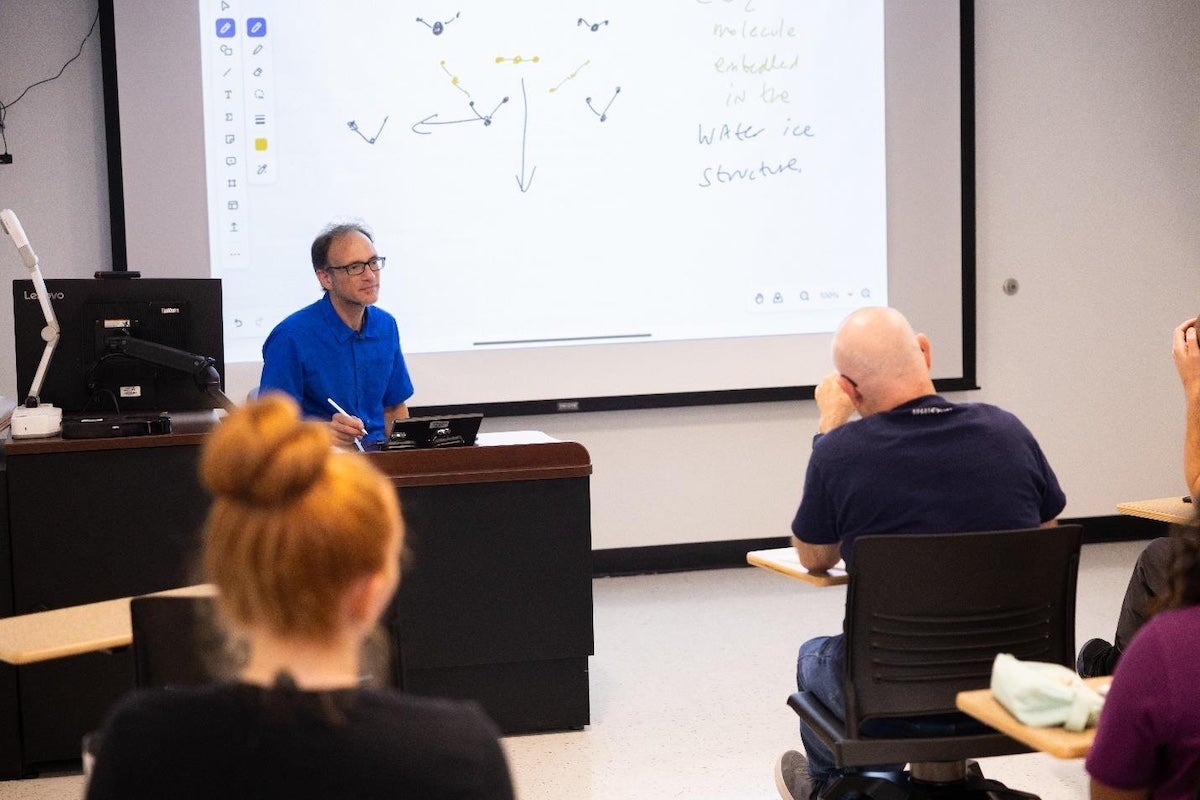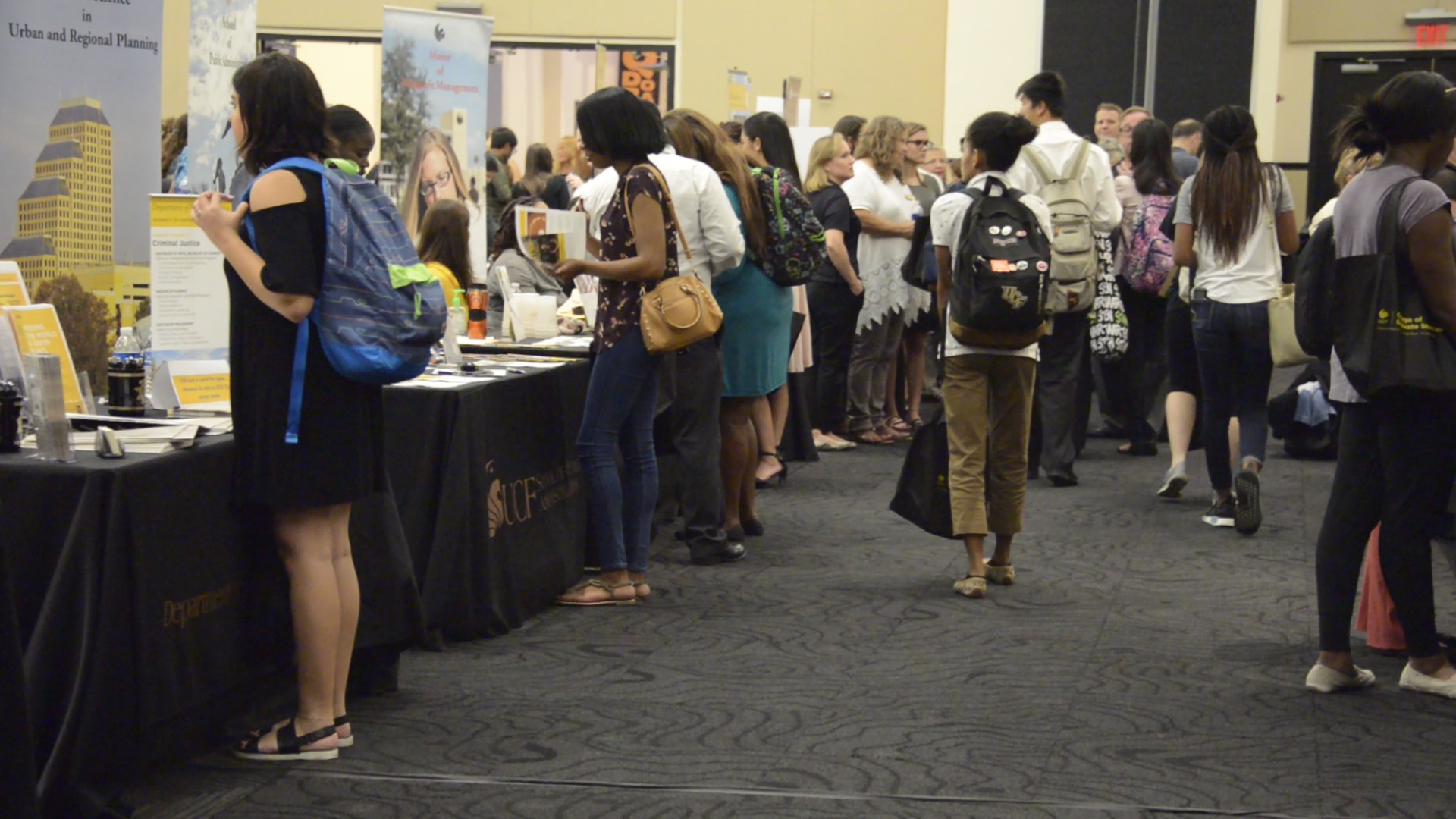UCF Ranks as a Top 25 U.S. Public University for Patents Granted
The University of Central Florida has moved into the ranks of the top 25 public universities in the nation for patents granted, according to the latest report from the National Academy of Inventors (NAI).
UCF secured 63 patents in 2022, ranking it No. 52 in the world and No. 23 among public universities in the nation, as shown in the annual Top 100 Worldwide Universities Granted U.S. Utility Patent rankings report released this week.
This places the university ahead of leading public and private institutions such as Yale University (61 patents), Carnegie Mellon University (59 patents), the University of North Carolina at Chapel Hill (49 patents) and Florida State University (33 patents).
This is the 10th year that UCF has ranked in the top 100 universities in the world for patents, and the new ranking represents an eight-spot jump from last year’s worldwide ranking.
“I continue to be impressed by the sustained technology development of our UCF researchers — placing UCF among the top 25 public universities in the U.S. for patents granted and surpassing many other prestigious institutions,” says Winston Schoenfeld, UCF’s interim vice president for research and innovation. “UCF’s consistent top rankings over the last decade demonstrate our strong dedication as a research institution to innovation and translation for societal benefit.”
Svetlana Shtrom, director of UCF’s Office of Technology Transfer, says UCF is very strategic in selecting inventions for patent protection to ensure fiscal responsibility and to maximize the potential of receiving impactful patents.
“Not every invention results in a patent,” Shtrom says. “For an invention to be patentable, it must be deemed by the United States Patent and Trademark Office to be novel, nonobvious and useful. UCF’s success in receiving patents reflects the depth of the university’s research and the commitment of its researchers to seek solutions to pressing problems, identify the most efficient and effective methods, and reach beyond the well-established standards to create impactful innovations.”
Here are a few of the UCF inventions that led to patents in 2022:
Interdigitated Electrodes For In vitro Analysis of Cells
Lead researcher: Swaminathan Rajaraman, associate professor, NanoScience Technology Center
This invention is a new tool that enables electrical and optical analysis of single cells and cell networks. It combines the simplicity of an interdigitated electrode (IDE) with the sophistication of plasmonics for in vitro biosensing applications. The invention may be used in applications such as in vitro drug development, single-cell analysis, toxicity testing and organ-on-a-chip models.
UCF is actively seeking licensing partners for this technology.
Visual-Tactile Virtual Telepresence
Lead researcher: Greg Welch, AdventHealth Endowed Chair in Healthcare Simulation in UCF’s College of Nursing
This invention is a tactile-visual system for social interactions between isolated patients (for example, those with COVID-19) and remote visitors such as loved ones, family members, friends or volunteers. Besides enabling people to visually interact with each other, the system gives isolated patients the perception of being touched and the visitors the perception of touching. For example, a loved one might be able to virtually stroke the patient’s arm or head, or even squeeze the patient’s hand. A simple realization might include tactile transducer “strips” placed on the patient with two-way video via touch-sensitive tablets, where touching the visual image of the strips on the tablet results in tactile sensations on the patient’s skin.
UCF is actively seeking licensing partners for this technology.
Monolithic Neural Interface System
Lead researcher: Brian Kim, associate professor, Department of Electrical and Computer Engineering
This invention is an innovative brain-machine interface (BMI) system that can enable throughput of 1,000 or more parallel recordings to repair human cognitive or sensory-motor functions. Current BMIs consist of bulky devices with massive external wire connections and packaging complexity. By internalizing the external wires within integrated circuits and miniaturizing the interconnections onto a single silicon chip, UCF’s new monolithically integrated neural interface (MINI) device provides unprecedented scalability for high-density recordings. Thus, embedding more than 1,000 channels, 1,000 amplifiers and 1,000 electrodes on a silicon die is possible. Wireless and battery-less, the new system offers the large-scale recording capability needed to advance brain research, brain mapping, and clinical translations of BMI recordings.
UCF is actively seeking licensing partners for this technology.
Cerium Oxide Nanoparticle Compositions and Methods
Lead researcher: Sudipta Seal, Pegasus Professor and chair of the Department of Materials Science and Engineering
This invention is a wet chemical synthesis process for fabricating cerium nanoparticles (CNPs) used in biomedical applications. With the UCF technology, companies can create CNPs that have the same material but comprise different properties. In one example application, the CNPs can be used to develop therapeutics to treat radiation exposure.
UCF is actively seeking licensing partners for this technology.
Spermine Pro-Drugs
Lead researcher: Otto Phanstiel, professor, College of Medicine
This invention is a spermine pro-drug designed to treat symptoms of a low spermine disorder. The invention provides a new potential therapy for Snyder Robinson Syndrome (SRS). Patients with SRS have little or no spermine synthase (SMS) enzyme activity and cannot effectively make spermine from spermidine. Spermine is one of the naturally occurring polyamines and plays important roles in maintaining cell health.
UCF is actively seeking licensing partners for this technology.
Color-Changing Fabric and Applications
Lead researcher: Ayman F. Abouraddy, Florida Photonics Center of Excellence Professor, College of Optics and Photonics
This invention is a color-changing fabric that enables a user to change colors and patterns on demand. For example, a person wearing a shirt and slacks made with the UCF technology ChroMorphous® can use her smartphone to change the colors and patterns without switching to another outfit. The same applies to a purse or backpack to match the outfit. Unlike existing color-changing technologies, the UCF invention does not depend on a wearer’s body heat, a room’s ambient temperature, or sunlight to work. ChroMorphous® is like traditional fabric — cut it, sew it, wash and iron it. Various applications include fashion and accessories, upholstery, medical, defense and artistic uses.
UCF is actively seeking licensing partners for this technology.
Plasmon-Assisted Photothermoelectric Effect-based Detection of Infrared Radiation on Asymmetrically Patterned Graphene
Lead researcher: Debashis Chanda, professor in UCF’s NanoScience Technology Center
This invention is a low-cost method that can enable ultrafast, tunable mid-infrared detection and imaging without the need for expensive and complex cryogenic cooling. The novel graphene-based method paves the way for multi-spectral imaging in the mid-IR domain, which is not available in current technologies. Companies can use the invention for IR detection and imaging in the 3-5 µm range band and the 8-12 µm band for areas such as space exploration, spectroscopy, chemical/biological identification, short-range communication and remote sensing.
This technology is licensed to a startup company.
Filtration System and Method for Treating Water Containing Nitrogen and Phosphorous Compounds
Lead researcher: Ni-bin Chang, professor, Department of Civil, Environmental and Construction Engineering
This invention is a filtration system that effectively removes nitrogen and phosphorus from water and transforms the compounds into reusable byproducts: ammonia and aluminum phosphate. The UCF aluminum-based green environmental media, AGEM(TM), compositions can co-treat stormwater runoff, wastewater effluent and agricultural discharge.
This technology is licensed.
About the Rankings
The NAI has released the rankings based on calendar year data provided by the United States Patent and Trademark Office (USPTO) since 2013.
The NAI is a member organization comprising U.S. and international universities, and governmental and nonprofit research institutes, with more than 4,000 individual inventor members and fellows spanning over 250 institutions worldwide. It was founded in 2010 to recognize and encourage inventors with patents issued from the USPTO, enhance the visibility of academic technology and innovation, encourage the disclosure of intellectual property, educate, and mentor innovative students, and translate the inventions of its members to benefit society.
Share This Article

UCF Women’s Club Honors 3 Graduate Students with Prestigious Sheila B. Somerville Scholarship
Financial support is often the cornerstone of academic success, and for many students, scholarships open the door to higher education. Beyond easing financial stress, these awards provide recognition, motivation, and a...
Latest News

UCF Launches 1st Planetary and Space Sciences PhD Program in Florida
As SpaceU, UCF is pushing the boundaries of exploration by launching a groundbreaking new doctoral program in the planetary and space sciences. Now, aspiring researchers can apply to the inaugural cohort of...

UCF Fulbright Awardees Bring Their Passions to a Global Scale
Each year, the Fulbright Program offers opportunities for American students to conduct research, teach English, or pursue graduate study abroad. One of the most prestigious international exchange programs in the...

Unleash Opportunities with a UCF Graduate Degree
A graduate degree has the power to unleash opportunities by expanding careers, opening doors to new fields, and increasing lifetime earnings. According to the U.S. Bureau of Labor Statistics (2024),...

UCF Rosen College Ranks No. 1 in the World for Hospitality Education for 2025
One of the most anticipated theme parks in the world is about to open its gates — and right next door, the No. 1 hospitality and hotel management school on...